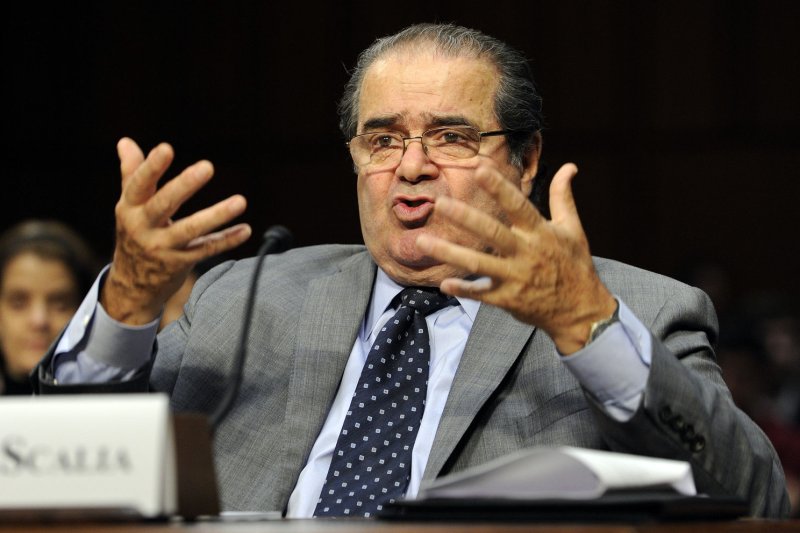Supreme Court Justice Antonin Scalia said the court's ruling would allow the EPA to regulate sources responsible for 83 percent of emissions. UPI/Roger L. Wollenberg |
License Photo
WASHINGTON, June 23 (UPI) -- The Supreme Court ruled Monday that the EPA exceeded its authority in requiring permits for certain industries but upheld its authority to regulate pollutants.
In a 5-4 vote, the Supreme Court said that the Environmental Protection Agency had overstepped an anti-pollution provision in the Clean Air Act to cover emissions from all new or modified power plants and by changing the emissions thresholds for greenhouse gases, an action, the court said, only Congress could take.
The decision said that the EPA could impose new permit requirements on some power plants and factories. This is separate from the climate change initiatives announced by the Obama administration on June 2. The court did say that the EPA can regulate emissions from industries that are already required to get permits for other forms of pollutants. The EPA can now, according to Justice Antonin Scalia, regulate 83 percent of all greenhouse gases emitted nationwide from stationary sources.
"EPA is getting almost everything it wanted in this case," Scalia said in summarizing the decision from the bench. "It sought to regulate sources it said were responsible for 86 percent of all the greenhouse gases emitted from stationary sources nationwide. Under our holdings, EPA will be able to regulate sources responsible for 83 percent of those emissions."
Monday's ruling follows a Supreme Court decision in 2007 that permitted the EPA to regulate greenhouse gases and pollutants under the Clean Air Act.
Under the Clean Air Act, new facilities built need a permit if they are going to emit more than a certain amount of pollutants. The EPA, after adding carbon dioxide to the pollutants it regulates, lowered the allowance of carbon dioxide emissions without congressional approval. A literal reading of the Clean Air Act would have meant that these regulations would have applied to thousands of houses, office buildings and shopping malls.
But the EPA chose to focus the rules on industrial facilities, which opened it up to litigation from industry lawyers, who said that the agency was bending the law to support its regulations.










